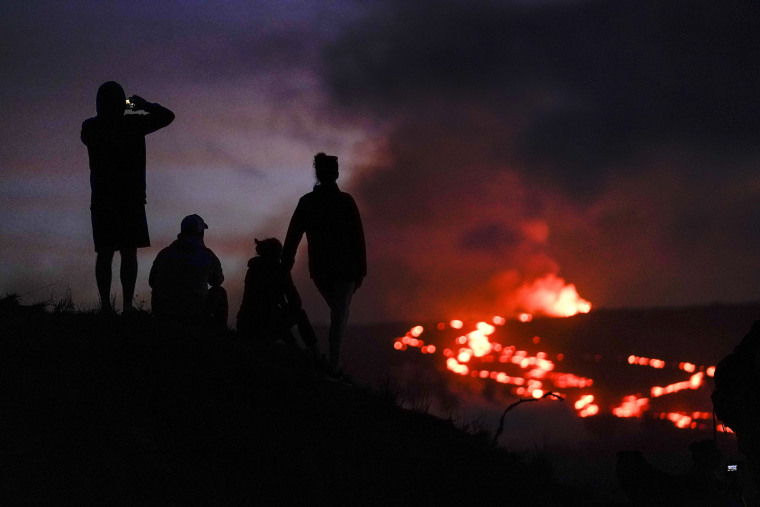HONOLULU — U.S. scientists declared Tuesday that two active Hawaii volcanoes — one where lava destroyed hundreds of homes in 2018 and another where lava recently stalled before reaching a crucial Big Island highway — have stopped erupting.
“Kilauea is no longer erupting,” the U.S. Geological Survey’s Hawaiian Volcano Observatory said in a statement Tuesday, followed by a separate one saying, “Mauna Loa is no longer erupting.”
Alert levels for both volcanoes were reduced from watch to advisory.
Mauna Loa began spewing molten rock Nov. 27 after being quiet for 38 years, drawing onlookers to take in the incandescent spectacle, and setting some nerves on edge early on among people who’ve lived through destructive eruptions.
Lava-viewers in Hawaii Volcanoes National Park enjoyed the added rare marvel of being able to see Mauna Loa’s smaller neighbor, Kilauea, erupting at the same time.
Kilauea had been erupting since September 2021. A 2018 Kilauea eruption destroyed more than 700 residences.
Mauna Loa lava didn’t pose a threat to any communities, but it got within 1.7 miles of a major highway that connects the east and west sides of the island.
For Native Hawaiians, volcanic eruptions have deep cultural and spiritual significance. During Mauna Loa’s eruption, many Hawaiians took part in cultural traditions, such as singing, chanting and dancing to honor Pele, the deity of volcanoes and fire, and leaving offerings known as “hookupu.”
Lava supply to a Mauna Loa fissure ceased on Saturday, the observatory said, and volcanic tremor and earthquakes associated with the eruption “greatly diminished.”
“Spots of incandescence may remain near the vent, along channels, and at the flow front for days or weeks as the lava flows cool,” the observatory’s activity summary said. “However, eruptive activity is not expected to return based on past eruptive behavior.”
Lava supply to Kilauea’s Halemaʻumaʻu lava lake ceased on Friday, the observatory said: “Potential remains for resumption of this eruption or initiation of a new eruption at or near the summit of Kilauea.”
The observatory will continue monitoring the volcanoes for signs of renewed activity.
